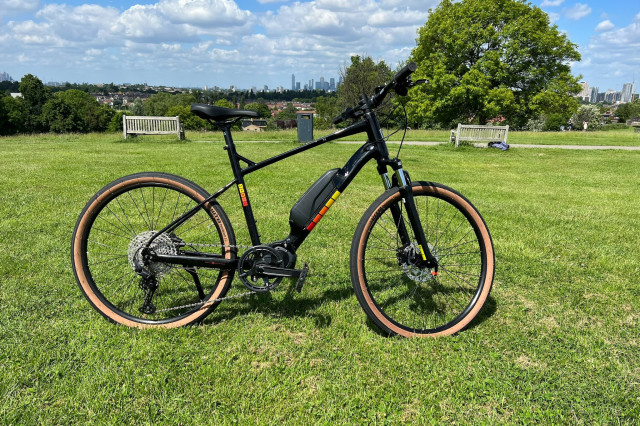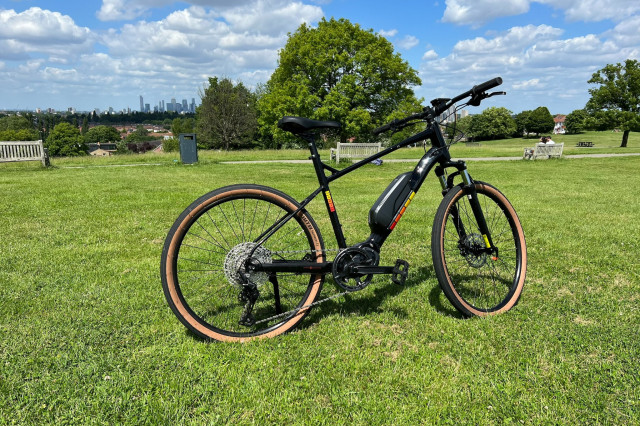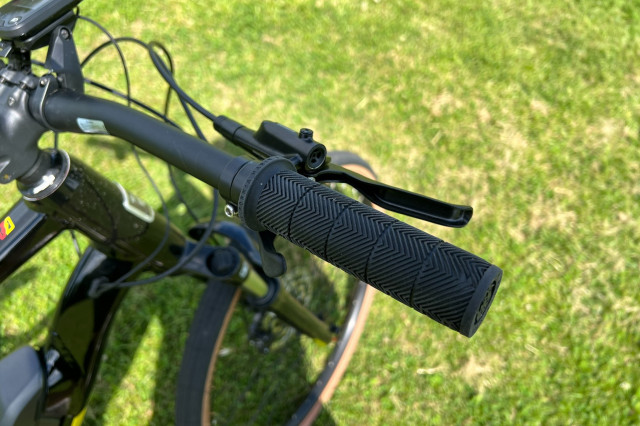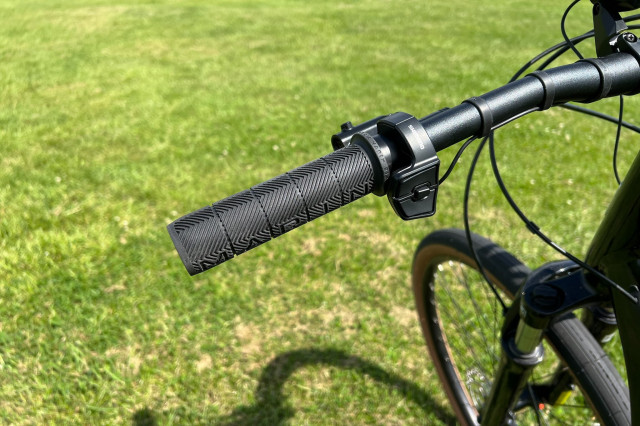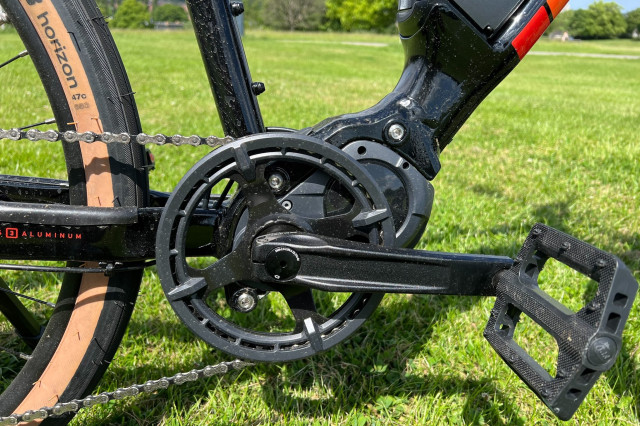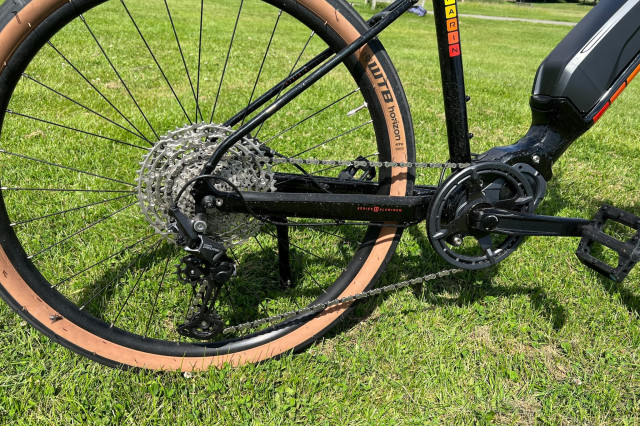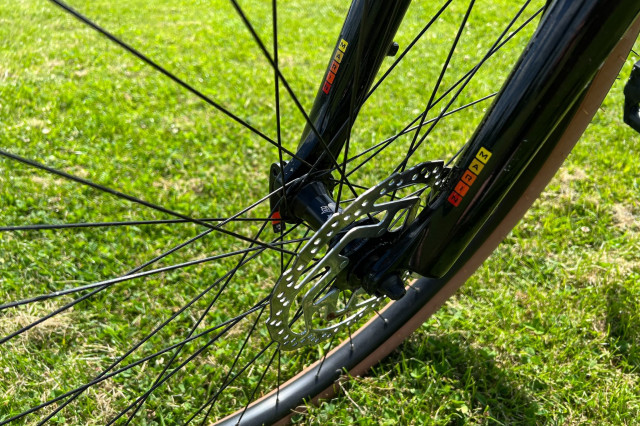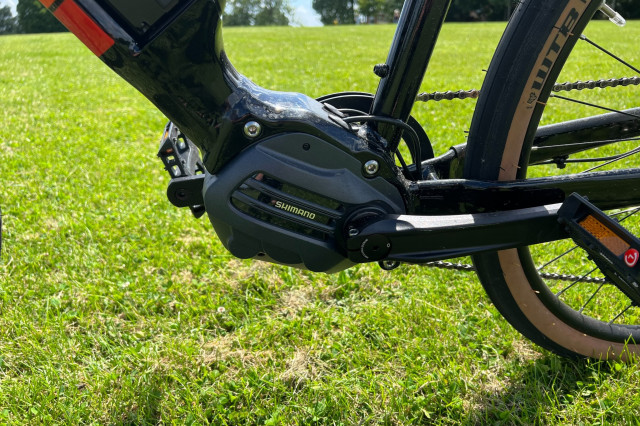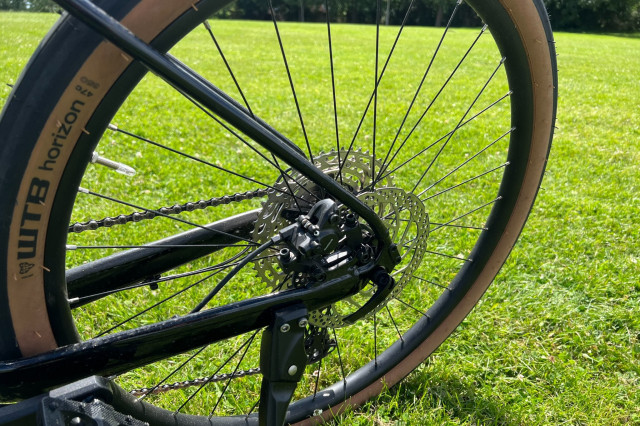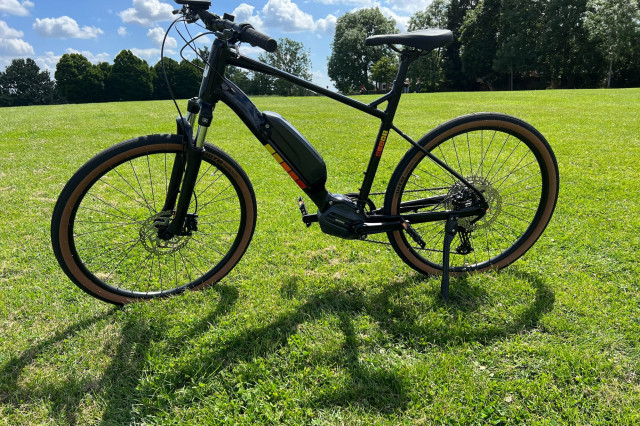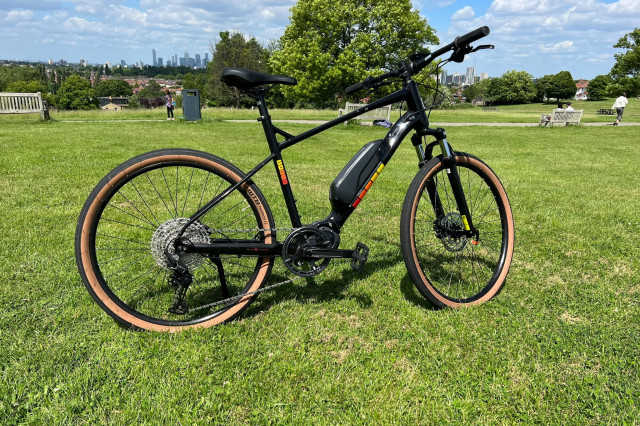Marin Sausalito E2
Overview
- Fantastic range
- Natural feeling power assistance
- Comfortable
- Assist isn’t as punchy as others
- A couple of issues out of the box
The Marin Sausalito E1 is a fantastic commuter e-bike that offers the most natural electric-assist of any e-bike I’ve tested combined with fantastic range.
Specs and components
The Sausilito E2 is kitted out fairly well. The key elements are a 1x Shimano Deore 11-speed setup combined with a Shimano STEPS E6100 mid-motor.
The Deore groupset used is the lower mid-level offering from Shimano, but with the huge leaps we have seen in technology around groupsets in the last few years, the shifting is crisp and smooth. Another important aspect of using such a common groupset is that it allows you to easily replace anything on the bike without too much fuss, whether in sourcing replacement components or finding out how to change elements yourself.
The bike I tested had not been particularly well set up. One of the hydraulic lines had not been attached properly, so when I pressed the lever fluid just dripped out. The rear derailleur also threw the chain off the top sprocket and into the spokes. Neither of these things were difficult to fix, but neither are the kind of things that I would expect to see straight out of the box.
Once the brake lines had been fixed the Shimano MT201 callipers worked well, the 180mm rotors giving you plenty of reliable and predictable stopping power without any hint of the grabbiness that you can sometimes find.
As for the motor, Marin has opted for the Shimano STEPS E6100 system, which is the most ‘natural’ feeling motor I have used. On most e-bikes the pedals tend to act less like pedals and more like an accelerator, but with Shimano’s system, it just makes you feel like you’re on a really good day without much effort. Although you don’t get the instant acceleration, it feels natural and more like you’re cycling rather than just travelling.
Control is through the E6100 display unit, which sits on an out-front mount on the handlebars. It is removable too, which adds a bit of security, although this doesn’t lock the bike. The display is clear and allows you to see your speed, distance and battery and assistance levels. It’s all very clear and easy to use with just three buttons controlling everything on the unit with an additional three buttons on a pad on the left of the bars to control the assist levels.
Finishing kit is generally Marin’s own, with a fairly plump saddle that is useful for a commuter – no need for bibshorts with this bike. It all feels sturdy and well-made with riser bars and an FSA headset.
Battery and charging
Keeping with the Shimano theme across the bike, Marin have used the Shimano BT6010, 418Wh battery which offers impressive range – a claimed 93km (about 57 miles) if used on a high setting.
I found the battery to be more than adequate, with a very impressive range despite me using it for some very steep hills and generally in the highest assistance level. I tended to use the bike for my 8.5 mile commute to and from work, so each day it would do around 17 miles. The last four miles of the 17 are generally all uphill too, which gives a good test outside of a simple flat run. With the battery at 100% I could get to work and back three times without needing to charge – so at least 51 miles. This is very impressive and broadly matches up to Shimano’s claims.
You can remove the battery from the bike easily by unlocking it and sliding it off sideways, but if you want to, you can also charge it on the bike as the access panel for the charging part is on the side and easily accessible.
Charging is through a standard three-pin plug with a transformer that then plugs into the side of the battery. I could recharge it from empty to 100% in around four hours and the indicator lights on the battery helped to give an indication of the charge level, which is always a welcome touch.
Performance and ride
The Sausalito E2 is designed to be a commuter/cruiser bike so its main focus is on comfort, which comes across in the ride.
Marin have used WTB Horizon, 650Bx47 tyres on their own 650 rims. These big slick tyres mean the ride would be very smooth anyway, but they’ve also used an SR Suntour NVX-E suspension fork which offers 63mm of travel. This means that you can hit almost anything and you’ll be comfortable. I tested this out on some fairly rough terrain just to check and anything I threw at it was fine.
Handling is also responsive enough for the kind of riding most people will do on this bike. I wouldn’t want to use it on an Alpine descent, but getting from one side of London to the other it is more than adequate.
The bars are fairly wide at 74cm for the large size that I tried, which can make filtering a little more challenging if you’re used to a road bike, but once you get used to it you don’t really notice.
The bike comes in at 21kg, which is relatively heavy, but about what I would expect from something using this Shimano system and that isn’t designed to be particularly lightweight.
Value
The bike has an RRP of £2,595. With the prevalence of Shimano throughout plus the quality of the build, this is the exact bracket I would expect.
The Genesis Columbia Road, which costs £2,999, is built around the same Shimano system, although it does have a few more practical features like the luggage rack and integrated lights.
The Cube Reaction Hybrid Performance 500 is closer in price, at £2,499. That’s perhaps more geared towards off-road riding though and is fitted with a Bosch mid-motor.
The Neomouv Adonis 2 (£2,36) is another mid-drive option – this time a Neoassist – and comes with a 522Wh battery.
The Ribble Hybrid Al e is also worth a mention if you’re after a commuter hybrid – although it’s important to note that while it’s a few hundred quid cheaper at £2,199, this is in large part because it sports a hub motor teamed with a 250Wh battery.
Overall
I was very impressed by this bike. The Shimano STEPS E6100 system that it’s built around is hard to beat and combining it with the Shimano Deore groupset means that it is reliable too.
Out of the box it took a few adjustments to get it right, but that aside there’s much to like about it.
